- Home
- Dan Simmons
Black Hills: A Novel Page 12
Black Hills: A Novel Read online
Page 12
And love.
There was a tiny bit of water left in the creek, enough to get the worst of the blood and gore off us, but we had to take turns lying in the deepest part, our bodies wider than the stream, each of us rolling and rubbing against the pebbled stream bottom like crazy otters. We ended up using the petticoats more as sponges than as towels and simply buried them in the mud and reeds when we were done.
When we came out of the willows to remount Vic, I shared my fear with you, my darling Libbie… that all of the Seventh Cavalry would be coming into sight from the east just as we mounted up, still a mile from your hobbled horse and our clothes.
That set us laughing. You were behind me riding back, your breasts full and insistent against my back, one of your hands flat across my chest but the other possessively on my inner thigh, and we could not stop laughing even as we dressed (your one remaining petticoat did little to fill out the riding outfit). We laughed most of the way back to the fort and when we managed to gain control of ourselves, one of us would glance across at the other and the laughter would start up again.
It was love, of course, Libbie, and passion for each other, but it was you yourself who later said it—“I have never felt more alive, Autie!” I had, but only in the heat of combat. I did not tell you that then and do so now only because I know that you will understand.
Sometimes, my darling, I wonder if this restorative sleep I am in now might not slip into coma and the coma inexorably into death, but then I remember moments such as that morning on the prairie and know that this is not possible…. I will not, I cannot, I shall not die before seeing you again. Before talking to you again.
Before making love to you again.
11
On the Six Grandfathers
August 1936
PRESIDENT ROOSEVELT IS DEFINITELY COMING TO THE BLACK Hills.
Word on the cliff face and on the faces themselves is that the president has given in to Borglum’s endless pleadings and will include in his busy South Dakota itinerary a formal dedication of the Thomas Jefferson head, probably on Sunday, August 30.
Less than a week’s time, thinks Paha Sapa. He can be ready by then.
Work on Mount Rushmore continues at the fastest pace in the project’s history despite the fact that this summer of 1936 is the hottest in the wasichus’ own recorded history.
Every day this summer, Paha Sapa listens to the other men talking about the temperature and about the forest fires to the north and about the Dust Bowl to the south. Average temperatures in July registered a full ten degrees above normal and August has been worse. Out on the plains where Rapid City swelters, midday temperatures hover around 110 and have touched 115 at least once. For Paha Sapa and the others working on the Rushmore cliff face, it is like being in a giant white bowl that focuses the sun’s rays. Not only does a worker’s back blister from the sun, but the heat and light reflected from the increasingly white layers of granite strike them like some sort of focused heat ray out of a science-fiction magazine.
All this August, the stone has been too hot to touch with ungloved hands for the long daylight hours. Paha Sapa’s and the other powdermen’s placement of the dynamite has been riskier than ever, with even the new sticks and blasting caps less stable in the searing, focused heat, and the rock itself threatening to ignite any one of the hundreds of shortened and fused sticks as they are tamped into place. On some days this August, despite his overpowering rush to finish the Jefferson head, Borglum has ordered the men off the cliff face for hours at a time, at least until lengthening shadows offer some relief from the heat.
Dehydration is the serious threat. Paha Sapa’s presumably cancer-ridden body feels it constantly, but now all the men are fearful of it. Borglum has set some men dangling full-time in their bosun’s chairs just to keep delivering water to the men working on the drilling and polishing, but it seems that no matter how many times a man drinks, his body always craves more. Paha Sapa has never seen the workers as tired as these slouching, shuffling, dust-coated figures coming down the 506 wooden steps each evening. Even the youngest, strongest men shuffle like the red-eyed, white-coated walking dead they are by the end of the workday up here.
With less than a week to go before President Roosevelt arrives, Paha Sapa spends his hours crimping and placing dynamite thinking about how to deliver the ton or more of explosives he will need next Sunday to bring down all three of the presidents’ heads in front of the horrified crowd (but not, he will take measures, down on them). But his epiphany on that matter the previous week makes Paha Sapa smile; all this time he’s been thinking about the problem as if he were planting the charges in their predrilled holes—hundreds upon hundreds of them for a blast this large—requiring weeks or months of drilling, if nothing else. But this will be no careful, business-as-usual carving of the Monument; this is the destruction of it. There will be no follow-up polishing charges or drilling or buffing, only ragged stone left—blasted away to the bedrock so that Borglum (or anyone) can never carve out sculptures here again. Paha Sapa smiles again at his own stupidity, bred by too many years working here as a faithful, skilled employee.
All he has to do by next Sunday is hide, in carefully placed and covered positions on and around all three heads, about twenty of the larger crates of dynamite he has hidden in his hovel in Keystone. Oneelectric blasting cap and wire will do for each of the crates. If he prepositions the crates, he will be able to get them up the mountain and hide them and arm them on Saturday night—the flurry of work and activity on Friday and Saturday will be mostly cosmetic, buffing up the stone, especially on Jefferson’s head, and arranging the flag with which Borglum plans to cover the head until the unveiling.
Paha Sapa shakes his head with the simplicity of the solution and his own opacity at not seeing it months—years—earlier. He can blame it now on the rare morphine injections he’s begun to give himself so that he can continue working.
Six more days? Can his five years on the hill, those thousands of days, come down to six more days?
Paha Sapa will not see the aftermath—he plans to go out with the heads in the mighty blast that will be the headline in every newspaper and on every radio broadcast and movie newsreel for weeks—but he knows he will be seen as a villain. For a while he will replace the infamous Bruno Hauptmann, or perhaps that rising new German villain Adolf Hitler, as “Americans’ most hated man.”
Roosevelt, Paha Sapa has heard, is coming to South Dakota and the West purely for political reasons. (Do presidents and other politicians, Paha Sapa wonders, ever do anything for any reason other than political?)
South Dakota had been a Republican state since time immemorial, since bison and those red savages were the only (nonvoting) citizens there, but Roosevelt carried it in 1932 and has no intention of allowing it to go back into the Republican column in the 1936 election, now just two months and a dusty handful of days away. More than merely wooing South Dakotans amid the Depression and the forest fires and the record heat, this will be billed as the jaunty president’s “Dust Bowl tour”—Roosevelt’s first effort to get out and see the havoc that the increasingly perverse climate is wreaking on a huge swath of the nation he rules from Washington and shady Hyde Park—although, Paha Sapa knows, the president’s destinations of Rapid City and Mount Rushmore are many hundreds of miles north of the northern boundaries of the actual, physical Dust Bowl.
While Paha Sapa cuts dynamite sticks into workable lengths—no gloves today for the fine work, so he will have a headache tonight—and prepares the fuses and blasting caps, he remembers his encounter with this so-called Dust Bowl.
BY SPRING OF THE PREVIOUS YEAR, 1935, work on the Monument was shutting down periodically for lack of funding. These funding gaps, often as imagined as real, and the brief work stoppages that came from them were a regular feature of work on Mount Rushmore, and the men were used to them, but this pause in the spring of ’35 was more about Gutzon Borglum’s battles with John Boland (Borglum’s theoretical bo
ss on the commission that oversaw the Rushmore carving) and Senator Peter Norbeck (the greatest supporter that the Monument ever had).
Borglum had never been able to tolerate “supervision” and he was poisoning his own nest that spring with his attacks on Boland, Norbeck, and his other most loyal supporters. So for a few days before Palm Sunday, 1935, Paha Sapa and the other men had neither work on the cliff nor pay coming in.
Then Borglum called Paha Sapa in to inform him that he and Borglum’s son, Lincoln, and two other men would be driving to southern Colorado to pick up two submarine engines.
Paha Sapa had heard about the engines.
The compressors, drills, twenty-some jackhammers, winches, tramway, and other machinery on the mountain needed a tremendous amount of steam and electrical energy, and Borglum had “upgraded” the old powerhouse several times, first moving it from its original location in nearby Keystone to the valley here and then increasing the size of the steam boilers and electrical generators. But, in Borglum’s view, there was never enough power, and recently the sculptor had accused commission member John Boland of shutting down the Insull Plant in Keystone not because it was worn out, as Boland had claimed, but for reasons of private profit.
Senator Norbeck informed Borglum that these sorts of wild attacks on Boland would get the entire project canceled, but Borglum persisted in both his attacks on Boland’s reasons for shutting down the original powerhouse and his lobbying for larger engines, turbines, and generators in the new plant.
The response in the winter of 1934 was that the navy would donate two used but still-functioning diesel engines from a submarine they were decommissioning.
—Probably two pieces of prehistorical junk left over from the Great War!
Borglum had thrown the letter across the room.
Whatever shape the diesels were in, the War Department promptly shipped them to the wrong place. Rather than getting them to Mount Rushmore or to Keystone or to Rapid City, the navy sent them by rail to the Ryan-Rushmore Electrical Works at the Colorado Steel plant in Pueblo, Colorado. And there, on a siding, the two giant banks of engines had sat under a tarp for two months. The Navy and the War Department acknowledged their small error but said that it was Borglum’s problem to get the monstrous things from southern Colorado to South Dakota.
Borglum seemed as distracted and angry as ever when he called Paha Sapa into his office at the studio on April 10.
—Billy, Lincoln’s going to take you and Red Anderson and Hoot Lynch down to Colorado in the pickup truck and the big flatbed Dodge we have on loan from Howdy Peterson’s cousin’s construction company. You’re going to bring back those damned submarine engines.
—OK, Boss. Do we get paid for the trip?
Borglum only stared at him with his most evil eye.
Paha Sapa started over.
—I don’t know how much a submarine engine weighs, Mr. Borglum, but I know we’ll need a crane to get them onto that Dodge’s flatbed. And odds are low to none that the Dodge’s suspension will handle a load that heavy all the way back from Colorado.
Borglum merely coughed his dismissal of that worry.
—The diesel monsters are at a steel plant, Old Man. They’ll have a crane, a ramp, whatever you need to load the things. Lincoln will take care of everything. He’ll have some walking-around money for you and Red and Hoot during the trip. Consider it your vacation for this year. If you leave in the next hour, the four of you can get down into Nebraska tonight before it gets too dark.
Paha Sapa had nodded and gone to find the other three.
They did get into Nebraska that evening, the two vehicles driving due south. Lincoln Borglum led in the Ford pickup truck, Hoot Lynch and Red Anderson both crowded into the passenger side. The two were close friends and disliked missing conversations and neither liked Paha Sapa all that much.
Paha Sapa didn’t mind driving alone, he preferred it actually, but the 1928 Dodge truck with its bug eyes and floating fenders and extended flatbed was a pure pig to drive. The whole vehicle was a dinosaur from earlier design days, including an opening slab of windshield that had to be battened down with brass clamps. The clamps were gone, the windshield never completely closed, and the result was that if they were lucky enough to find a patch of highway where they could drive thirty miles per hour, the cold air poured in over Paha Sapa. He was wearing his son’s leather motorcycle jacket and his heaviest gloves, but his fingers were numb after just the first twenty-five miles, and the big truck steered so poorly that his arms ached abysmally from the exertion by the end of that first afternoon and evening.
Paha Sapa didn’t mind the pain. It distracted him from the worse pain lower down.
They didn’t drive very long after dark, since dust was blowing up with the Nebraska wind and Borglum had told his son not to drive at night if the dust storms were obscuring vision. They got permission to camp in a farmer’s field that first night, hunkering the trucks down behind a lone line of pine trees put there a generation earlier to serve as a windbreak. They’d stopped by Halley’s Store in Keystone—the better of the two general stores there (Paha Sapa always expected Art Lyndoe’s store to go out of business, it extended so much credit to the miners and other locals)—and picked up some bread and bologna and canned goods for the trip.
There was no extra wood for a campfire, so they heated their pork and beans over cans of Sterno. It was a poor substitute for a real campfire, but they huddled in their sleeping bags—Paha Sapa had only two blankets—and tried to talk a few minutes before turning in to sleep at seven p.m.
With the wind and light dust storm, the talk invariably turned to the endless drought and the weather. Both of the Dakotas had seen their share of blowing dirt—just the year before, in ’34, Mount Rushmore and the Rapid City area had had two days of darkness as uncounted tons of topsoil blew high over them in the jet stream, darkening the sun, that “duster” finally reaching New York City and the Atlantic Ocean—but it was Nebraska and states south that were really drying up and blowing away. At least South Dakota still had grass on its prairie.
Red Anderson cleared his throat.
—I was talking to a CCC boss who says that President Roosevelt’s got men out traveling all over the world hunting for the right kind of pine or fir tree. Roosevelt’s got experts advising him that they could build a huge windbreak, just like this’n, only stretching from Mexico to Canada, and the farmers could huddle in its lee, like.
Lincoln Borglum and Hoot chuckled at the image. Red frowned at them.
—I’m serious. He really said it.
Lincoln nodded.
—And I bet they are considering such a windbreak, although where on earth they’ll find a pine tree that can put up with this heat and these droughts, all the way down through Texas, I have no idea. And I heard from another CCC boss that the president was also being advised by his so-called experts to just save the expense and evacuate the south of Nebraska, major parts of Kansas, most of Oklahoma, east Colorado, and all of the Texas Panhandle down to Lubbock… just let the plowed-up topsoil blow away and hope the grasses come back in a generation or two.
Hoot Lynch snorted as he scooped up the last of his beans.
—Well, that’s one shit-poor idea, if you ask me.
Red shot his pal a glance, and Hoot sort of bobbed his head in the direction of Borglum’s son.
—Sorry, didn’t mean to… I mean…
Lincoln Borglum grinned.
—I don’t mind a little cussin’, Hoot. If it doesn’t get in the way of things. I’m not a Mormon.
The other two men laughed at that, and Paha Sapa found himself holding back a smile. He knew that Lincoln’s father, Gutzon Borglum, had been a Mormon—his parents Mormon, his father with two wives—and that the woman Borglum listed as his mother was actually his father’s second wife, and his real mother had left the family after they’d moved due to persecution of the Mormons.
Paha Sapa knew this because he had had a confused glut of
Gutzon Borglum’s memories, including the direst secrets, in his mind since that day in the Homestake Mine in 1931 when Borglum had come to hire him, Paha Sapa, and then offered to shake hands when the deal was done. With that handshake, Paha Sapa had almost staggered back as all of Borglum’s memories had flowed into him. Just as Crazy Horse’s had back in the late summer of 1876.
Just as Rain’s had that first night they’d kissed in 1893.
Luckily, these three people’s lifetimes of memories (and Rain’s was so sadly short!) were passive—there to confuse Paha Sapa at the time but not shouting out and interrupting and babbling away into the night the way the ghost of Custer still did.
Sometimes, Paha Sapa was sure that the bulk and weight and noise of these other memories, not to mention the ghost rattling its bars for almost sixty years now, were sure to drive him mad. But at other times he was glad the memories were there and he found himself walking through the corridors of Borglum’s past or Crazy Horse’s—more seldom Rain’s, since it was so painful to do so—the way Doane Robinson might wander the stacks of a particularly fine reference library.
Lincoln said to Paha Sapa—
—Did you attach the drag chain under the Dodge the way I said?
—Yes.
They were coming down into the land of dusters and black blizzards now—there were twenty other names for these sudden, fierce, sometimes weeklong dust storms—and discharges of static electricity were a real threat. A truck’s whole ignition system could be wiped out in an instant of white-static ball-lightning unless the drag chain grounded it, and then they’d be stuck for sure, a hundred miles from the nearest mechanic besides themselves. (It was the spare engine parts they lacked, although both vehicles hauled extra tires and wheels and fan belts and other parts in their carrying beds.)

 The Terror
The Terror Endymion
Endymion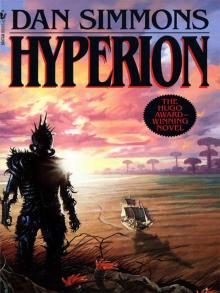 Hyperion
Hyperion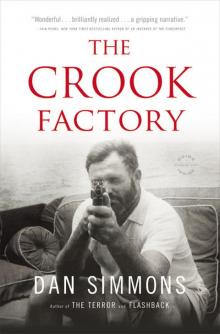 The Crook Factory
The Crook Factory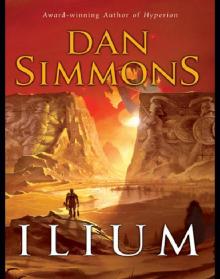 Ilium
Ilium Phases of Gravity
Phases of Gravity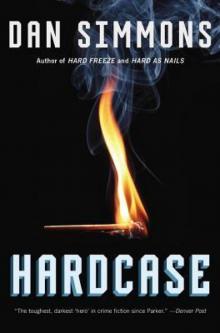 Hardcase
Hardcase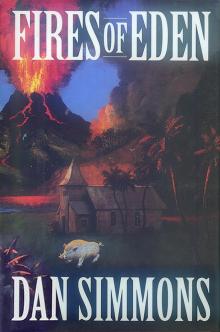 Fires of Eden
Fires of Eden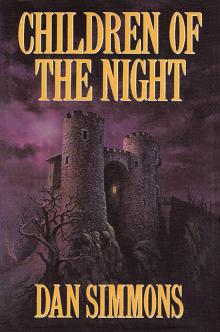 Children of the Night
Children of the Night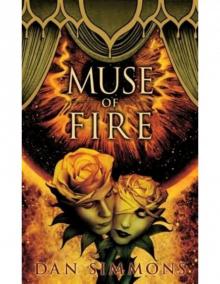 Muse of Fire
Muse of Fire Drood
Drood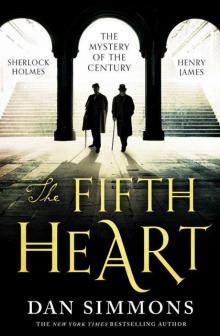 The Fifth Heart
The Fifth Heart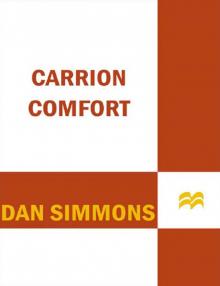 Carrion Comfort
Carrion Comfort The Hollow Man
The Hollow Man Summer of Night
Summer of Night The Fall of Hyperion
The Fall of Hyperion Black Hills
Black Hills A Winter Haunting
A Winter Haunting Hard Freeze
Hard Freeze Prayers to Broken Stones
Prayers to Broken Stones Hard as Nails
Hard as Nails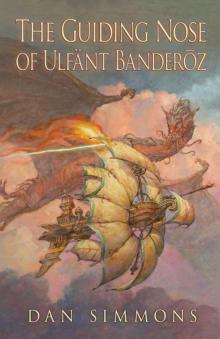 The Guiding Nose of Ulfant Banderoz
The Guiding Nose of Ulfant Banderoz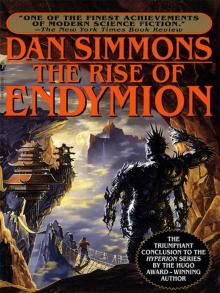 The Rise of Endymion
The Rise of Endymion Orphans of the Helix
Orphans of the Helix Lovedeath
Lovedeath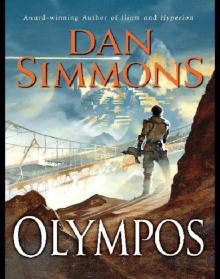 Olympos
Olympos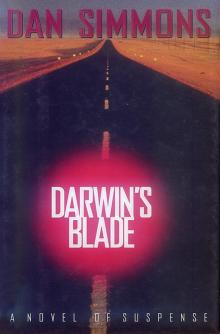 Darwin's Blade
Darwin's Blade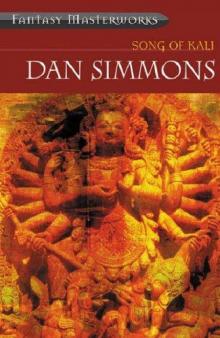 Song of Kali
Song of Kali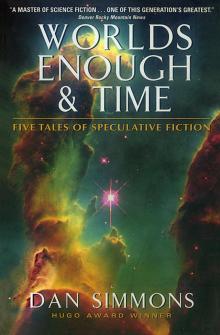 Worlds Enough & Time: Five Tales of Speculative Fiction
Worlds Enough & Time: Five Tales of Speculative Fiction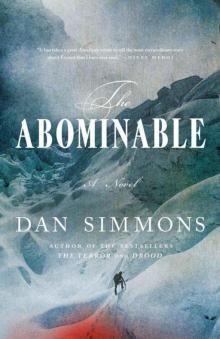 The Abominable
The Abominable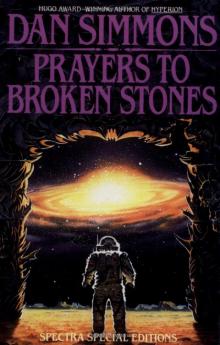 The Death of the Centaur
The Death of the Centaur Hard as Nails jk-3
Hard as Nails jk-3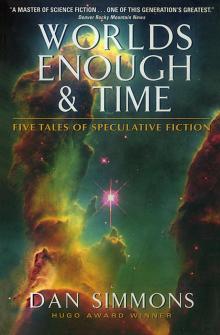 Worlds Enough & Time
Worlds Enough & Time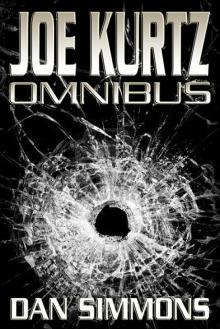 Joe Kurtz Omnibus
Joe Kurtz Omnibus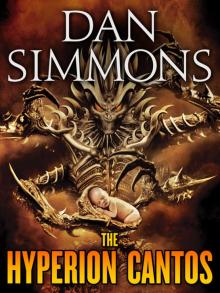 The Hyperion Cantos 4-Book Bundle
The Hyperion Cantos 4-Book Bundle Rise of Endymion
Rise of Endymion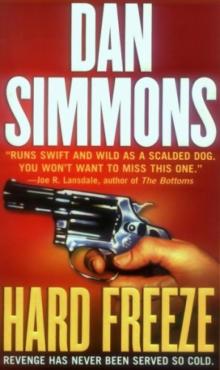 Hard Freeze jk-2
Hard Freeze jk-2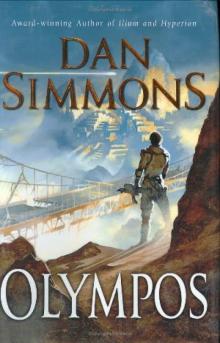 Olympos t-2
Olympos t-2 The Abominable: A Novel
The Abominable: A Novel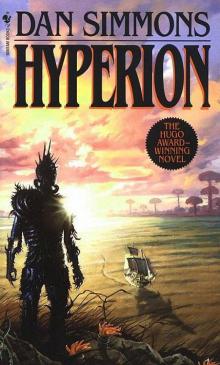 Hyperion h-1
Hyperion h-1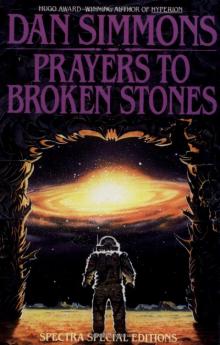 Remembering Siri
Remembering Siri Black Hills: A Novel
Black Hills: A Novel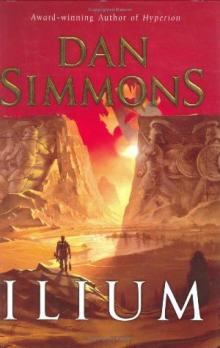 Ilium t-1
Ilium t-1 Hardcase jk-1
Hardcase jk-1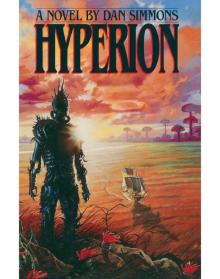 Hyperion 01 - Hyperion
Hyperion 01 - Hyperion